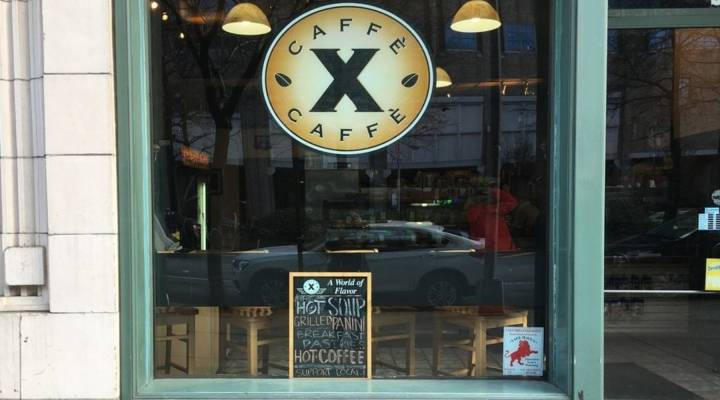
The U.S. tries to boost poor neighborhoods, again. Will it work this time?
The U.S. tries to boost poor neighborhoods, again. Will it work this time?

In the Washington Heights neighborhood of upper Manhattan, there’s an old theater that feels stranded in time.
The Audubon Ballroom, built in 1912, features grand columns and intricate carvings of Roman gods on its facade. The ballroom was a vaudeville theater, then a movie theater. But its place in history was solidified in the 1960s: Malcolm X was assassinated while speaking at the Audubon Ballroom on Feb. 21, 1965.
In the 1990s, Columbia University wanted to tear down the Audubon to build lab space for its growing hospital and medical school. Columbia had been eyeing the property for years, but the Audubon was now inside a newly created “Empowerment Zone,” and building there would be suddenly much cheaper.
The Empowerment Zone was the latest iteration of a decades-old idea that places suffering from persistent poverty could be turned around with incentives to bring in private investment and business development.
With the passage of the new tax law, the idea has surfaced again.
State governments are currently in the process of nominating “Opportunity Zones,” low-income areas, which, if approved, would qualify for capital gains tax incentives as a means to bring in private investment.
The problem is that such programs have been tried and proven ineffective for nearly 40 years. While they might bring wealth to poor areas, they don’t generally create wealth within the areas. The wealth trickles up rather than down.
Why try again?
“The reason why we see the tax code acting as a vehicle for so much policy is because there’s reluctance to have government programs that actually transfer money to the people and places that need them,” says Rachel Weber, professor of urban planning and policy at the University of Illinois at Chicago.
So if the poor don’t benefit greatly from programs like the Empowerment Zone or Opportunity Zone, who does?
“Folks looking to reduce their tax liability are going to do well,” Weber said. “High-net-worth individuals who can personally benefit from a deferment or deferral of their capital gains tax. Also, potentially, developers interested in building in places where there may be an additional subsidy.”
She added that a cottage industry of professionals who specialize in the arcane rules, regulations and tax code minutiae of programs such as these has sprung up and also stands to benefit.
“The Opportunity Zone, like the Enterprise Zone or the Empowerment Zone before it, is really a zombie policy, staggering on for decades despite its moribund performance,” said Tim Weaver, assistant professor of urban policy and politics at the State University of New York in Albany and author of “Blazing the Neoliberal Trail: Urban Political Development in the United States and United Kingdom.”
Weaver believes the new Opportunity Zone program will be even less effective than the ’90s-era Empowerment Zones, because it doesn’t include that program’s direct cash grants or local hiring requirements.
Steve Glickman of Economic Innovation Group, who helped design the new program, said states and cities are free to create any requirements they wish to ensure the programs works best in their own communities.
He understands that cutting taxes for investors may not be the most direct way to help the poor. But, he said, “if you’re poor in a poor community, there’s no hope. If you’re poor in a prosperous community, you’re many more times more likely to climb the socioeconomic ladder.”
Economic research supports this. But Kimberley Johnson, a New York University professor of social and cultural analysis, said addressing the underlying inequality would do even more to help the poor.
Columbia University ultimately got its wish at the Audubon Ballroom. It was turned into a seven-story research lab. The facade of the ballroom was preserved, with the idea that it would be turned into a museum and cultural space. But on a recent day, would-be visitors couldn’t get past the locked doors during posted visiting hours. A passerby mentions that the space is rarely open, perhaps twice a month.
“That’s really telling,” said Johnson, who attended Columbia in the ’90s. “This was a space that was supposed to be for the community, and it’s not really accessible.”
While many workers in the building are white-collar transplants employed by the medical lab, it does seem as though the local hiring requirement was fulfilled. There’s a locally owned Caffe X on the premises, serving fresh pastries and hot coffee.
“Is that what Malcolm X would have envisioned?” Johnson asked. “Probably not, but it’s nice, I guess.”
There’s a lot happening in the world. Through it all, Marketplace is here for you.
You rely on Marketplace to break down the world’s events and tell you how it affects you in a fact-based, approachable way. We rely on your financial support to keep making that possible.
Your donation today powers the independent journalism that you rely on. For just $5/month, you can help sustain Marketplace so we can keep reporting on the things that matter to you.


















